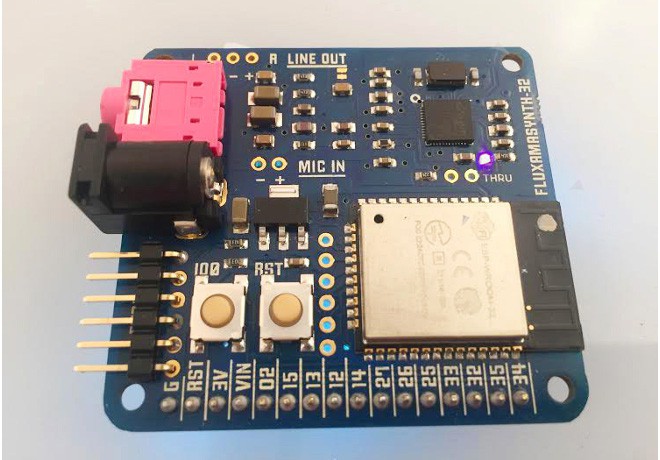
The first new variation is the Fluxamasynth-32, an all-in-one module with an ESP32 on board. I wanted something that could be programmed using the Arduino IDE but didn't require a separate Arduino board. The ESP32 also provides Wifi and BLE features, so Fluxamasynth-32 modules can speak to a server or each other.

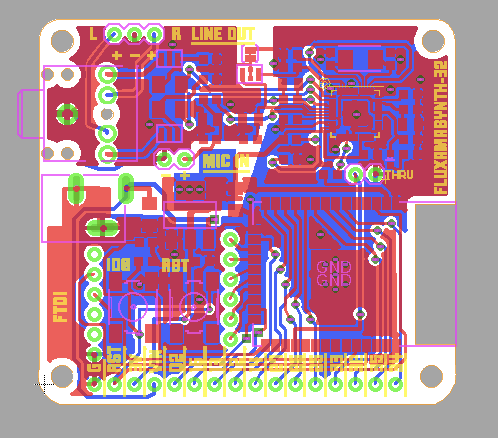
When making the new board design I tightened up the layout of the traces. Around the same time Kingbright announced a new line of pastel LEDs so all the new Fluxamasynth's have pink LEDs.
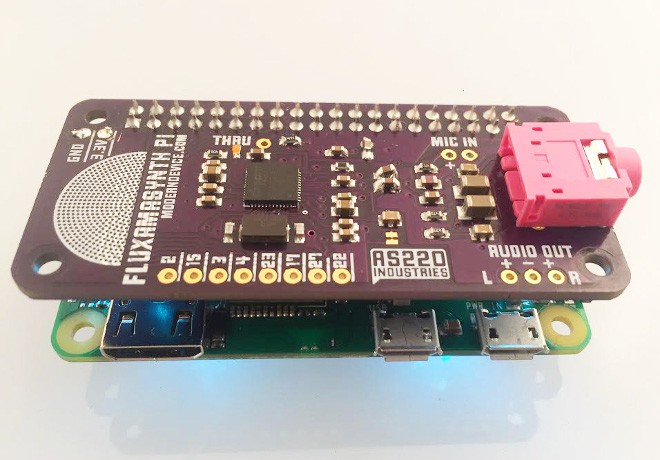
Once I had the layout it was easy to make a version for the Raspberry Pi. In the first iteration I gave it a separate 3.3V regulator that was fed by the 5V pin on the Pi header. It turns out that supply is very noisy (especially when USB is used) and it was much cleaner to just run it off of the Pi's regulated 3.3V supply.
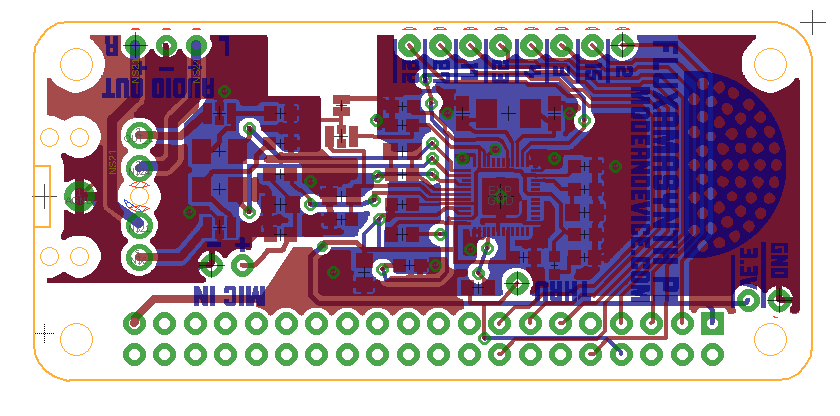
Finally, I had been using a few of the different Adafruit Feather development boards and they seemed like a popular solution for when you need a combination of small form factor and battery recharging. The Fluxamasynth for Feather fits the form Factor.
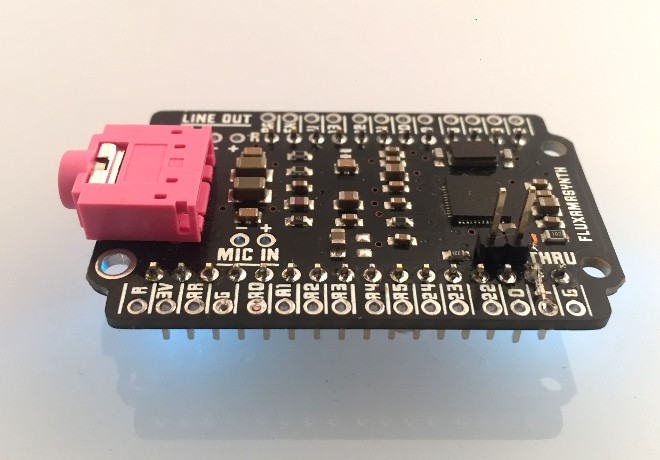
It can go on top or on the bottom but is probably better on the bottom since some of the ARM Feathers need access to the reset and bootloader buttons on top. The breakout pins on the outside are spaced slightly off grid to accommodate the 1x4 screw terminals that I was using.
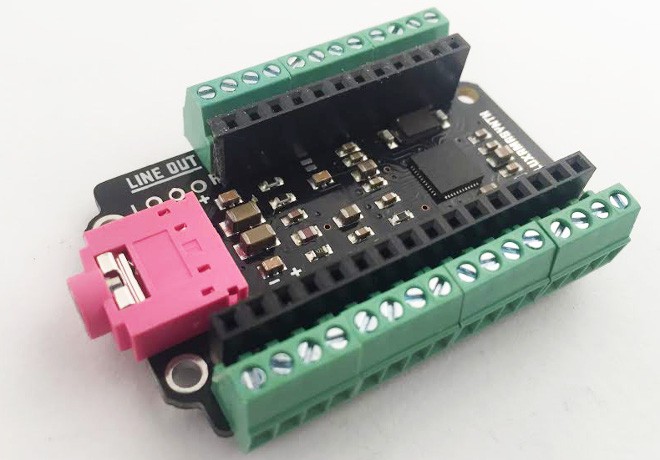
I already had a Fluxamasynth library, with code contributed by Fluxamasynth user R. McGinnis. Next step was to update the library for the new boards and expose some more of the lower level functionality of the chip with the library.
 Fluxly
Fluxly
Discussions
Become a Hackaday.io Member
Create an account to leave a comment. Already have an account? Log In.